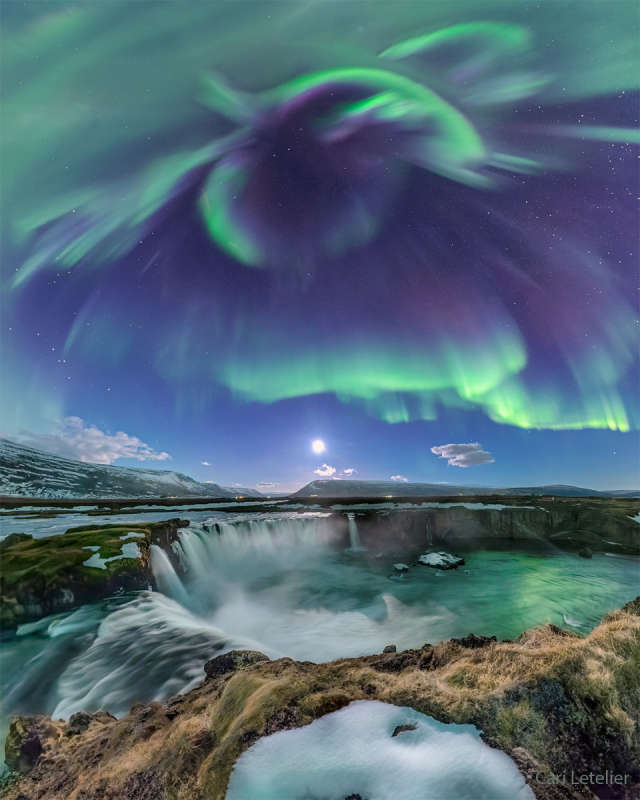Credit & Copyright: Cari Letelier
Explanation:
It seemed like the sky exploded.
The original idea was to photograph an
aurora over a waterfall.
After waiting for hours under opaque
clouds, though, hope was running out.
Others left.
Then, unexpectedly, the clouds moved away.
Suddenly,
particles from a large solar magnetic storm were visible impacting the
Earth's upper atmosphere with full effect.
The night sky filled with
colors and motion in a
thrilling auroral display.
Struggling to steady the camera from
high Earthly winds,
the 34 exposures that compose the featured image were taken.
The
resulting featured composite image
shows the photogenic Godafoss (Gocafoss) waterfall in northern
Iceland in front of a very
active aurora in late February.
The solar surface explosion
that expelled the energetic particles occurred a
few days before.
Our Sun is showing an impressive amount of
surface activity as it approaches
solar maximum,
indicating that more impressive auroras are likely to appear in Earth's
northern and southern sky over the next few years.
1999 2000 2001 2002 2003 2004 2005 2006 2007 2008 2009 2010 2011 2012 2013 2014 2015 2016 2017 2018 2019 2020 2021 2022 2023 2024 2025 |
Yanvar' Fevral' Mart Aprel' Mai Iyun' Iyul' Avgust Sentyabr' Oktyabr' Noyabr' Dekabr' |
NASA Web Site Statements, Warnings, and Disclaimers
NASA Official: Jay Norris. Specific rights apply.
A service of: LHEA at NASA / GSFC
& Michigan Tech. U.
|
Publikacii s klyuchevymi slovami:
aurora borealis - severnoe siyanie
Publikacii so slovami: aurora borealis - severnoe siyanie | |
Sm. takzhe:
Vse publikacii na tu zhe temu >> | |
